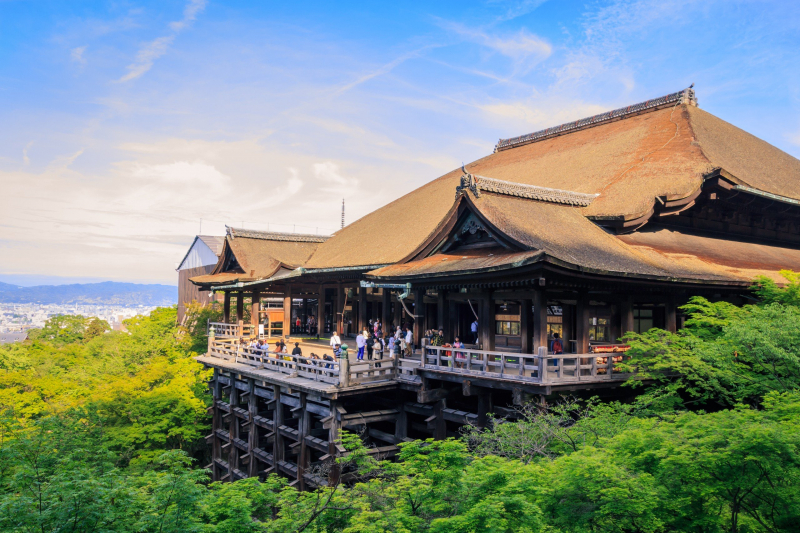Kiyomizu-dera Temple
Known as the "Kiyomizu Stage" or "Kiyomizu-no-Butai," the enormous wooden platform is the temple's most recognizable feature. This stage protrudes from the main hall, towering 13 meters above the hillside covered in trees below. The stage, supported by an intricate system of wooden pillars and beams, offers incredible sweeping views of Kyoto, particularly during the cherry blossom season and in the fall when the leaves are colorful.
Another notable design characteristic is the absence of nails in the construction of Kiyomizu-dera. The entire temple is built using a traditional Japanese building technique known as "nozura-zukuri," which entails connecting wooden beams together without the need for metal fasteners. This method not only demonstrates the artisans' skill but also the temple's dedication to using conventional building techniques.
The temple's main hall, known as the "Hondo" or "Deva Hall," is a design masterpiece. Its pitched roof and gracefully curving eaves are characteristic of the Japanese design style of "Hondo-zukuri." One of the most revered objects in the hall is a statue of the goddess of mercy, Kannon, who has eleven heads.
Kiyomizu-dera is also known for its intricate lattice windows and wooden paneling, which add to its overall elegance. The intricately designed lattice windows offer a captivating play of light and shadow that improves the temple's aesthetic appeal.
Kiyomizu-dera Temple's design features, such as the Kiyomizu Stage, Hondo main hall, intricate lattice windows, and striking vermilion lacquer, all create a landmark with impressive vision and historical significance. These features contribute to the temple's status as a treasured cultural and design treasure in Kyoto, attracting visitors with its timeless beauty and spiritual ambiance.
Address: 1 Chome-294 Kiyomizu, Higashiyama Ward, Kyoto, 605-0862, Japan
Website: https://www.kiyomizudera.or.jp/en/











